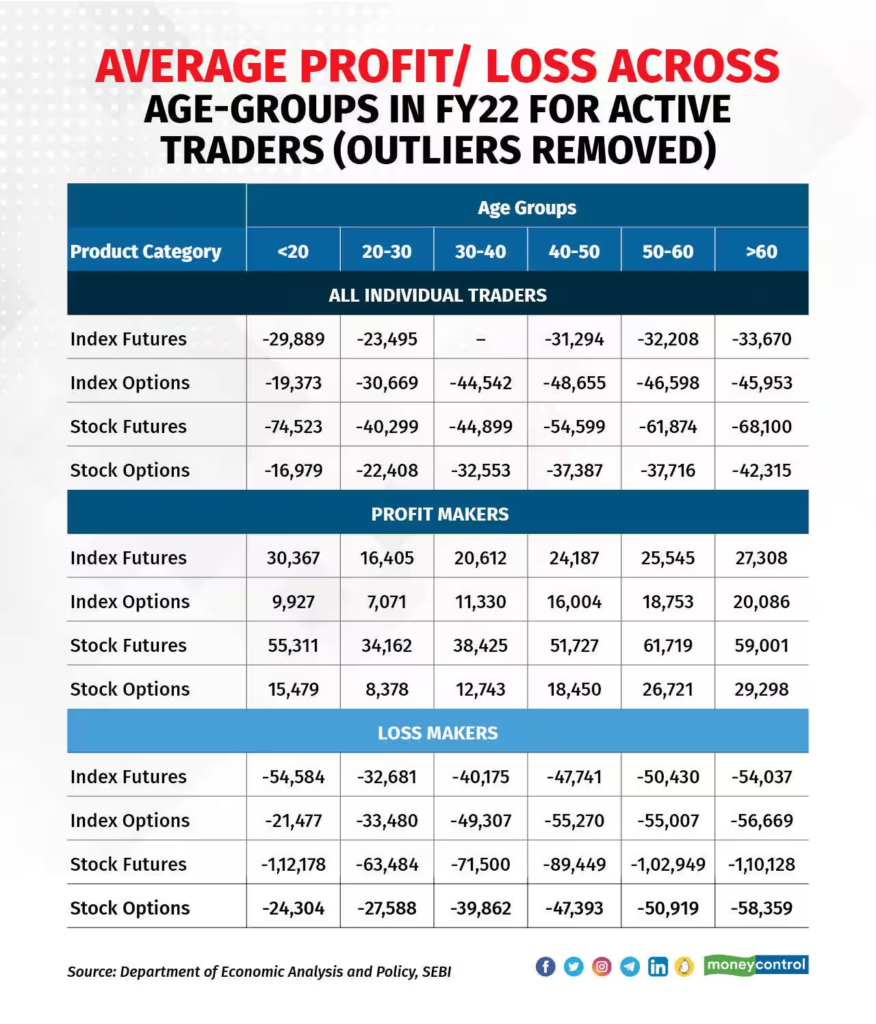editor
Titan Company Limited: A Rising Star in the Indian Consumer Market

Titan Company Limited (Titan) is a renowned Indian multinational consumer products company that specializes in jewelry, watches, eyewear, and lifestyle accessories. Founded in 1984 by the Tata Group and headquartered in Mumbai, India, Titan has emerged as a leading player in the industry. This article will delve into the key factors contributing to Titan’s remarkable success and explore why the company’s stock is a favorable investment in the thriving Indian consumer market.
1. Introduction

Titan Company Limited, established in 1984 by the Tata Group, has established itself as a leading multinational consumer products company based in Mumbai, India. With a primary focus on jewellery, watches, eyewear, and lifestyle accessories, Titan has garnered a significant market share in the Indian consumer market.
2. Titan’s Strong Brand Equity and Reputation
One of the key reasons behind Titan’s phenomenal growth is its strong brand equity and reputation. Titan is widely recognized as one of the most trusted brands in India, known for its commitment to quality and craftsmanship. The company has built a loyal customer base by consistently delivering products that exude elegance and reliability.
3. The Growth of the Indian Middle Class
Titan’s remarkable success can also be attributed to the rapid growth of the Indian middle class. As the Indian economy flourishes, the middle class is expanding, resulting in increased disposable income. This shift in the economic landscape has created a vast market for Titan’s products, driving up sales and profits.
4. Expanding into New Markets
In addition to its stronghold in the domestic market, Titan has strategically expanded its footprint into international markets. By venturing beyond its home turf, Titan has unlocked new avenues for growth and increased its market reach. This expansion has undoubtedly played a pivotal role in bolstering the company’s sales and profits.
5. Innovation as the Driving Force

Another critical factor contributing to Titan’s success is its unwavering focus on innovation. The company continually introduces new and exciting products, keeping pace with ever-changing consumer preferences. By embracing innovation, Titan has managed to stay ahead of its competitors, captivating the market with its cutting-edge offerings.
6. Titan’s Impressive Growth

Over the years, Titan’s stock has experienced a remarkable surge, with a staggering rise of more than 8,000% since 2003. This unprecedented growth can be attributed to a combination of factors, including its strong brand equity, the expanding Indian middle class, international market expansion, and an unrelenting commitment to innovation. Titan’s consistent performance has positioned the company as one of the most valuable enterprises in India.
7. Key Drivers of Titan’s Success
The success story of Titan can be attributed to several key drivers:
7.1 Strong Brand Equity
Titan has managed to establish itself as a trusted brand, resonating with customers due to its unwavering focus on quality and craftsmanship. The company’s commitment to delivering exceptional products has enabled it to build a loyal customer base.
7.2 Growing Indian Middle Class
The rapid growth of the Indian middle class has created a burgeoning consumer market. With increased disposable income, the middle class seeks high-quality products, making Titan an ideal choice. The company has successfully tapped into this vast market, driving substantial growth.
7.3 Expansion into New Markets
By expanding its presence in both domestic and international markets, Titan has diversified its revenue streams. This strategic expansion has not only boosted sales but also strengthened the company’s position in the industry.
7.4 Focus on Innovation
Innovation lies at the heart of Titan’s success. By continuously introducing new and innovative products, the company has managed to captivate consumers and maintain a competitive edge. This focus on innovation has played a pivotal role in driving Titan’s growth trajectory.
In addition to these factors, there are a few other things that have contributed to the recent growth of Titan’s stock:

- The rise of online shopping: Titan has been able to capitalize on the rise of online shopping in India. The company has a strong online presence, and it has been able to reach a wider audience through this channel.
- The increasing popularity of jewellery and watches: Jewellery and watches are becoming increasingly popular in India, and this has helped to boost Titan’s sales.
- The company’s focus on sustainability: Titan is committed to sustainability, and this has been well-received by investors. The company has a number of initiatives in place to reduce its environmental impact, and this has helped to improve its reputation.
Titan’s Strategic Partnerships and Acquisitions: Driving Stock Growth and Competitive Advantage
Partnership with TAG Heuer

In 2005, Titan forged a strategic partnership with TAG Heuer, the esteemed Swiss watchmaker known for its precision and luxury timepieces. This collaboration enabled Titan to introduce a range of TAG Heuer watches in the Indian market. By leveraging TAG Heuer’s brand equity and cutting-edge technology, Titan enhanced its product offerings and expanded its customer base. The partnership not only bolstered Titan’s reputation as a trusted watch manufacturer but also propelled its sales to new heights.
Acquisition of Fastrack

Recognizing the growing demand for fashion accessories among the youth, Titan made a significant move by acquiring Fastrack in 2006. Fastrack, a popular brand known for its trendy and affordable accessories, perfectly complemented Titan’s vision of catering to the evolving preferences of Indian consumers. This strategic acquisition provided Titan with a strong foothold in the fashion accessories market, allowing the company to tap into a new segment of customers and further diversify its product range.
Acquisition of Tanishq

In 2012, Titan made a groundbreaking acquisition by purchasing Tanishq, a leading jewellery brand in India. With this strategic move, Titan solidified its presence in the lucrative and rapidly expanding jewellery market. Tanishq’s expertise in crafting exquisite gold and diamond jewellery, combined with Titan’s distribution network and brand reputation, created a formidable force in the industry. The acquisition of Tanishq not only propelled Titan’s revenue but also strengthened its position as a trusted name in the jewellery sector.
Partnership with Kalyan Jewellers

To bolster its retail presence and capitalize on the vast potential of the Indian jewellery market, Titan entered into a strategic partnership with Kalyan Jewellers in 2019. Kalyan Jewellers, a renowned jewellery retailer with a widespread network across India, provided Titan with access to its vast retail infrastructure. This collaboration allowed Titan to expand its reach and leverage Kalyan Jewellers’ established customer base. By combining their strengths, Titan and Kalyan Jewellers aimed to offer unparalleled value to customers and further drive their market share in the jewellery industry.
As a result of these partnerships and acquisitions, Titan has become one of the leading consumer products companies in India. The company is well-positioned for continued growth in the years to come.
In addition to the partnerships and acquisitions mentioned above, Titan has also made a number of other strategic moves that have contributed to its stock growth. These include:
- Investing in research and development
- Expanding its retail network
- Diversifying its product portfolio
- Expanding into international markets
These strategic moves have helped Titan to maintain its leadership position in the Indian consumer products market. The company is well-positioned for continued growth in the years to come.
Titan’s Strategies for Strong Financial Performance and Stock Growth
In today’s competitive business landscape, companies strive to maintain strong financial performance and drive stock growth. Titan, a renowned company, has successfully employed several strategies to achieve these goals. We will explore the key strategies adopted by Titan and how they have contributed to the company’s success.
Strategies Used:-
- Focus on Innovation
- Expansion into New Markets
- Investment in Research and Development
- Diversification
- Focus on Customer Satisfaction
Examples of Implementation
Watches and Wearables Segment:

Titan has introduced a range of new products, such as the Titan Raga, Titan Edge, and Titan Octane, in the watches and wearables segment. These innovative products have resonated well with consumers, boosting the company’s sales and market share.
Jewellery Segment:

Titan has expanded its presence in tier-II and tier-III cities in the jewellery segment. By targeting these growing markets, the company has successfully reached a wider audience and experienced significant sales growth.
Eyewear Segment:

Through strategic partnerships with renowned international brands like Ray-Ban and Oakley, Titan has enhanced its eyewear segment. These collaborations have expanded Titan’s product offerings and attracted new customers seeking premium eyewear.
Digital Space: Titan has capitalized on the digital revolution by launching various e-commerce initiatives. These online platforms have allowed the company to reach a broader customer base, resulting in increased online sales and market visibility.
What challenges has Titan faced along its growth journey, and how have they been overcome to fuel further stock growth?
Titan has faced a number of challenges along its growth journey, including:
- Competition: Titan faces competition from a number of other companies in the Indian consumer products market. These companies include HUL, ITC, and Aditya Birla Group.
- Changing consumer preferences: Titan’s products are subject to changing consumer preferences. For example, the popularity of watches has declined in recent years, as more people have switched to using smartphones.
- Economic slowdown: The Indian economy has experienced a number of slowdowns in recent years. These slowdowns have had a negative impact on Titan’s sales.
- Government regulations: Titan has had to comply with a number of government regulations. These regulations have increased the cost of doing business for Titan.
These are just a few examples of how Titan has overcome challenges and continued to grow.
Here are some specific examples of how Titan has overcome these challenges:
- In the face of competition from other companies, Titan has focused on innovation and introduced new products that have been well-received by consumers. For example, the company’s Fastrack brand has been very successful in the fashion accessories market.
- In response to changing consumer preferences, Titan has expanded its product portfolio to include more affordable products. This has helped the company to reach a wider audience.
- During economic slowdowns, Titan has focused on cost-cutting and improving operational efficiency. This has helped the company to maintain its profitability.
- In response to government regulations, Titan has worked closely with regulators to ensure that it is compliant. This has helped the company to avoid any major fines or penalties.
The Expert Analyst Brokerage Firm Views on TITAN Stock
In the case of TITAN stock, the majority of analysts have a positive outlook and believe in its growth potential.

The Reasons for Analysts’ Bullish Outlook
1. Strong Track Record of Growth
One of the key reasons why analysts view TITAN stock positively is its impressive track record of growth. Over the years, Titan has consistently achieved growth in sales and profits. This consistent performance showcases the company’s ability to adapt to market dynamics and maintain a strong position within its industry.
2. Benefiting from the Growing Indian Consumer Market
TITAN is well-positioned to take advantage of the expanding Indian consumer market. With the Indian economy experiencing rapid growth and an expanding middle class, there is a significant demand for products offered by Titan. The company’s wide range of offerings, including watches, jewelry, eyewear, and fragrances, cater to various consumer preferences and price points.
3. Strong Brand Reputation
Titan has established itself as one of the most trusted brands in India. Its products are renowned for their quality, craftsmanship, and innovative designs. The company has successfully built a loyal customer base, which further enhances its growth prospects. A strong brand reputation not only contributes to customer loyalty but also provides a competitive advantage in the market.
4. Expansion of Product Portfolio
To capitalize on emerging opportunities, Titan is consistently expanding its product portfolio. The company has ventured into new categories, such as eyewear and fragrances, to diversify its offerings and cater to evolving consumer preferences. This strategic expansion allows Titan to tap into new markets and reach a broader audience, thereby driving growth and increasing market share.
Analyst Ratings for TITAN Stock
Several expert analyst brokerage firms have provided their ratings and target prices for TITAN stock:-
- ICICI Securities: “Buy” with a target price of ₹3,400
- Morgan Stanley: “Overweight” with a target price of ₹3,300
- Nomura: “Buy” with a target price of ₹3,200
It’s important to note that these ratings represent the analysts’ opinions at a given time and may vary over time.
8. Conclusion
In conclusion, Titan Company Limited has firmly established itself as a leading player in the Indian consumer market. With its strong brand equity, expansion into new markets and unwavering focus on innovation, Titan has witnessed unprecedented growth over the years. As the Indian economy continues to flourish and the middle class expands, Titan is poised for further success. Investors seeking exposure to the thriving Indian consumer market would be wise to consider Titan’s stock as a promising investment opportunity.
Key Takeaways:-
Q1. What are Titan’s primary areas of specialization? Titan specializes in jewellery, watches, eyewear, and lifestyle accessories.
Q2. When was Titan Company Limited founded? Titan Company Limited was founded in 1984 by the Tata Group.
Q3. Where is Titan Company Limited headquartered? Titan Company Limited is headquartered in Mumbai, India.
Q4. What factors have contributed to Titan’s impressive growth? Titan’s growth can be attributed to its strong brand equity, the growing Indian middle class, expansion into new markets, and relentless focus on innovation.
Q5. Why is Titan’s stock considered a favorable investment? Titan’s stock is considered a favorable investment due to the company’s robust performance, strong brand equity, and exposure to the thriving Indian consumer market.
editor
Can I become rich by Trading in the stock market? Do people become rich by Trading?

No matter your job, take a moment to observe your colleagues in the office, and you’ll likely find that nearly everyone is involved in the stock market trading these days. The younger crowd might be exploring cryptocurrencies. However, for those earning a regular salary, the stock market seems to be the go-to investment choice. Why is it gaining such traction? One word: profitability. Despite the ongoing fear of recession and the economic challenges post-COVID, the stock market hasn’t faced any significant downturns recently. This is largely because of a surge in the retail investors pouring their funds into the market. Expect this trend to stick around for at least the next five years. This makes the stock market a promising option for investors looking to get rich. Below is a chart on the explosive growth of Dmat accounts in India.

Finally, jumping into the question of whether trading can lead to wealth, the answer isn’t straightforward. While it’s true that numerous individuals have gathered wealth through trading, the majority have found success through long-term investments. However, trading does have the potential to significantly increase your wealth, provided you’re ready to dive deep into the details of stock price movements, have a bit of luck, and operate within a favorable market environment. Essentially, achieving wealth through trading requires being in the right stock at the right time during a market upswing, coupled with adequate capital and a solid understanding of both technical and fundamental market analysis. In this article, we’ll further explore the pathways to becoming wealthy through trading.
What is Trading?
Trading in the stock market involves engaging with a stock for a brief period. Essentially, it means purchasing a stock and selling it soon after for a profit, aiming to buy and sell quickly once a specific profit margin is achieved. Contrarily, investing is about buying stocks with the intention of holding onto them for long-term gains. Trading can be categorized into intraday trading or swing trading, each with its unique approach.
- Intraday Trading: This involves buying and selling stocks on the same day. The advantage here is the ability to buy up to five times the shares with the same amount of capital thanks to a 20% margin. However, the catch is the necessity to sell your shares by the day’s end, even at a loss, making it a speculative and high-risk endeavor.
- Swing Trading: This strategy is akin to investing but over a shorter timeframe, such as a week, a month, or a few months. The goal here is to sell the stock once a predetermined profit target is reached and then move on to another stock. Unlike intraday trading, swing trading does not compel you to sell if the stock’s value decreases after purchase.
In summary, both trading strategies aim for profit but differ significantly in their approach and risk levels.
How can I become rich by trading?
Becoming wealthy through trading isn’t as straightforward as it might seem. In India, a massive 90% of intraday traders conclude the year with losses. This stark statistic highlights the necessity of being among the elite 10% of traders just to secure a profit, let alone accumulate wealth. This means to get rich by trading, aiming for the top 2-3% of intraday traders is essential. Achieving this level of success requires rigorous study and a careful approach to avoiding common trading mistakes. Our goal here is to paint a realistic picture of the challenges involved in profiting from the stock market. However, stick with us as we explore strategies to join the ranks of the top 2% of traders. Meanwhile, lets take a look at the data for active traders in India.

Factors to consider to become a successful Trader
Despite extensive learning from books and YouTube videos, losses in the stock market are still possible because trading requires attentiveness to various factors, much like driving. To assist, we’ve compiled a list of essential factors to consider, ensuring a more informed trading approach.
- Focus on learning the fundamentals: Understanding the distinction between profitable and loss-making traders is crucial, and it often comes down to one key factor: learning how to trade effectively. Luck might bring success once or twice, but for consistent positive outcomes, acquiring trading knowledge is essential. To delve deeper into the fundamentals of trading and enhance your skills, consider our free and paid courses.
- Keep realistic expectations: Doubling your money weekly is unrealistic without time travel. My personal best was a 20% gain in a month during a significant bull run, using both swing and intraday trading. Typically, you might aim for a maximum of 5% monthly. However, in adverse conditions or a bear market, achieving any profit can be challenging, and losses are possible. So, it is essential that you maintain realistic expectations from the stock market. It is not a money making machine that can make you rich in a few months.
- Start as early as possible: Achieving wealth is a personal goal; for example, earning 1 crore might be one’s definition of being rich. To accumulate such wealth from the stock market requires either substantial initial capital or a long-term commitment. Starting in your early twenties could be advantageous for those aiming to build significant wealth through trading. I personally started at the age of 24 and I have made a lot of money in my journey of 3 years. So, I have plenty of time to compound my earnings now.
- Trade only on opportunity: Achieving consistent profits in trading relies on capturing the right opportunities rather than engaging in unnecessary trading, which often leads to losses. It’s crucial not to feel compelled to trade daily. If the trading conditions you rely on aren’t present on a particular day, it’s wise to step back. Patience and strategic action based on well-defined opportunities are key to success in the trading world.
- Take risks when theres a chance: There will be oppertunities where you’d be sure of your trade, in those instances you could play with more amount of money. for example you have 100 Rupees and usually you trade in 5 stocks with 20 rupees each. but on certain day you see a very high probability of a share to go up by 5%, in those situations you may have to play a single trade with 100 Rupees to get the most out of the trade.
- Don’t get obsessed about a single stock: It may happen that a stock which you expect to go up by 10% is now stuck in a small range and is showing unpredicatble price movement. In those situations, you dont have to be obsessed about that stock and regardless of the bad situations end up trading on that. every stock presents an equal opertunity, dont generate affection with a particular stock.
- Try to trade in the momentum: Mornings are where most of the movement is seen in stocks based on the news. so, make the most of this and try to enter in the morning hours, preferably after the opening hours. this helps because theres a lot of volume action in the morning time. where theres volume means more possibility of stock price to move in a higher range. read our volume analysis report here.
Even if you follow all the above rules, you might still find yourself in difficult situations due to the dynamic nature of the stock market. We have covered a few of these situations below. The most important thing here is consistent learning and elevated self-confidence. Remember, don’t become obsessed with the stock market; it won’t change your life overnight.
What if I lose most of my money?
Trading can result in significant losses. If you find yourself making consecutive incorrect trades, it’s advisable to pause and reflect on the causes of these setbacks. Assess whether it was a poor choice of company or overlooked critical factors in stock selection. Every trade offers a learning opportunity, so maintain a notebook to note down mistakes after each unsuccessful trade. This practice helps in identifying patterns in errors and refining future trading strategies.
What should be my capital?
We recommend starting with 20,000 rupees to see if trading suits you. It’s crucial to assess whether you can manage the stress of daily gains and losses. While taking inspiration from others and YouTube channels is beneficial, you should avoid making trades solely based on someone else’s advice. There’s a temptation to increase your capital after a few successful trades, but don’t let it dominate your decision-making. Often, traders start losing money as soon as they invest more.
How much can I expect?
Don’t expect the market to make you ultra-rich in a short period. It’s best to enjoy your job and aim to improve your earnings and learning. Trading can provide additional funds for spending or reinvesting, but it should not be relied upon for daily living. Keep your expectations realistic. You might aim for 30-40% profits annually if you become very skilled. Remember, many stocks could potentially grow 30-40% within a year without causing you stress.
Where to learn about trading?
There are many books available on Amazon that you can refer to. “Trade Like a Stock Market Wizard” is my top pick. This book is for swing traders and not intraday traders. I personally feel swing trading offers more potential if you have a large capital. But, if you are new to the stock market, intraday trading with a small capital can give you much more learning and lessons. You can follow multiple Telegram or YouTube channels as well. However, be cautious as many of these influencers are turning out to be frauds.
Thus, is it very difficult to become rich by trading in the stock market. However, its not very difficult to accumulate wealth by trading on the favourable instances.
editor
Understanding the Paytm Scenario: A Guide for Investors

Paytm is a loss making machine from the day it got listed on the NSE index. The recent weeks have been the most painful. The company faced a series of regulatory setbacks, stock price fluctuations, and operational changes, which have left investors and market observers scratching their heads. Let’s break down what happened to Paytm and explore what investors should consider doing next.
Key Events Impacting the Paytm stock
- RBI’s Directive: Starting February, the Reserve Bank of India (RBI) put a stop to Paytm Payments Bank’s new deposits and wallet transactions. This move was a significant blow to Paytm’s operations.
- Stock Price Tumbles: Following a report from Macquarie that lowered Paytm’s target price to Rs 275 and downgraded its rating to “Underperform,” Paytm’s stock price fell by 8.5%. The stock hit an all-time low of Rs 386.25, indicating a notable loss of confidence among investors.
- Regulatory Challenges: Paytm’s regulatory hurdles, especially the RBI’s restrictions, have raised alarms, contributing to the stock trading at an 81% discount from its IPO price.
Paytm Stock Price since the listing day – A continues decline.

Before we proceed, it’s important to bear in mind that a company facing profit challenges in a competitive industry is likely to encounter difficulties. As informed and savvy investors, we must maintain our stock selection filters and not rush into purchasing such stocks during minor recoveries. Keep in mind, a stock’s price doesn’t rise or fall in a single movement; it fluctuates, but the overall trend is what truly matters. Therefore, if you’re not already invested and are tempted to buy in at these low prices, exercise caution.
Ok, now back to the events that unfolded for Paytm over this month.
February’s Rollercoaster Ride for the Paytm stock
- February 1: Reserve Bank of India (RBI) ordered Paytm Payments Bank to halt the acquisition of fresh deposits into its accounts or wallets effective February 29. This decision sent shockwaves through the market, leading to an 8.5% drop in Paytm’s stock price. Then leading investment firms started to cut the target price of Paytm.
- February 2: Paytm’s stock opened at a 20% lower circuit, anticipating a significant EBITDA impact.
- February 3: Morgan Stanley Asia Singapore Pte bought 50,00,000 shares of Paytm, signaling some investor confidence. But, this probably will turn out to be a bad decision!
- February 4: BSE adjusted Paytm’s daily stock limit to 10% after two consecutive days of hitting a 20% lower circuit. The stock was in an uncontrolled fall for a couple of days.
- February 5: Jio Financial Services’ shares surged due to false news about acquiring Paytm’s wallet business. General public was anticipating that either Tata or Ambani will acquire Paytm business.
- Mid-February Developments: Paytm faced further challenges, including being removed from the list of authorized banks for FASTag services by NHAI. However, the RBI confirmed Paytm’s operational functionalities would continue beyond March 15, 2024, after shifting nodal accounts to Axis Bank. The Enforcement Directorate also found no FEMA violations by Paytm Payments Bank Limited.
Investor Takeaways
- Regulatory Compliance: It’s crucial for businesses to stay aligned with local regulations. Compliance should be seen as an essential part of operations, not a burden.
Quote from a investor sitting on a heavy loss in Paytm share – “I am sitting in the loss of a few lakhs as I trusted Paytm and purchased the stock. Can you convince your investors how are you going to fill that loss and what are your future plans?”
Another retail investor tried to warn general public to not catch the falling knife. He said – “Never buy any stock making hype in media/social media for any reason,+ve or -ve. You will save yourself from alot of blunders! For example, think about the people who bought paytm on first reversal. while they know everything still they are trapped.”
- Funding and Market Entry: Companies need to be mindful about their sources of funding and how they expand, especially in politically sensitive times.
- Focus is Key: Diversifying is good, but not at the cost of losing sight of the core business. Companies must ensure their primary operations are solid and compliant. Investors must have a long term view and not shuffle their portfolio unless there is a need to do so. We are sure that many retail investors must have sold their profit making shares and purchased Paytm at a 20% correction anticipating some gains. But, remember that once you are trapped in a loss making company, you could remain trapped forever.
- Caution for Investors: Given Paytm’s current situation, with significant stock price volatility and regulatory challenges, investors should proceed with caution. It’s advisable to consult with a financial advisor, especially if you’re already invested.
Read more about the fundamental analysis of Paytm below. Can Paytm turn Profitable?
Why Paytm share hit an upper circuit?
This is where things get exciting, Paytm has hit a 5% upper circuit for a couple of consecutive days now. Axis Bank helped Paytm this time as Paytm partnered with Axis Bank for the settlement of merchant payments. Paytm has shifted its nodal account to Axis Bank through an escrow account that it has opened with it. But remember, stock price will eventually is decided by company performance and balance sheet. These upper circuits are news driven, as of now we are not sure what kind of impact will this have on the functionality of Paytm.

Moving Forward
Paytm’s recent experiences underscore the complex landscape of financial technology in India. For investors, these developments are a reminder of the importance of diligence and cautious optimism when dealing with stocks facing regulatory and operational hurdles.
For those invested in or considering an investment in Paytm, staying informed and seeking professional advice is key. The path ahead for Paytm is fraught with challenges, but with careful navigation, there may still be opportunities for growth and recovery. Keep following Tradealone for more such informative content.
What are your thoughts on the Paytm situation? Do you believe the company will overcome these challenges? Share your views in the comments below.
editor
Navigating the Real Estate Market in India: A Perspective

In the dynamic landscape of Indian real estate, it’s crucial to see the market for what it truly is. Unlike in many Western countries, where populations are declining, India’s demographic trajectory paints a different picture. Let’s dive into the nuances of the Indian real estate market, shedding light on who wins, who loses, and how to navigate these waters.
Population Growth and Housing Demand
India’s population is not on the decline; predictions suggest it will peak around 2065. This demographic trend ensures that housing demand will remain robust for the foreseeable future. Unlike transient market trends, the basic need for housing, driven by a growing population, is a fundamental force that will sustain demand.
The Buying Behavior of the Rich
In India, real estate often finds favor with the affluent as a diversification strategy or a means to save on taxes. This segment of buyers is not just looking for any real estate; they’re in the market for ‘good’ real estate at fair prices. Their continued investment underlines a belief in the market’s growth potential. The narrative here is not just about investment but about strategic acquisition based on value, not just price.
The Middle-Class Quandary
The real estate dream, however, turns a bit complex for the middle class. Many find themselves navigating overpriced “boxes in the sky” in cities like Gurgaon or Noida. The crux of the issue lies in transparency—or the lack thereof. With an almost infinite supply from well-connected builders and no clear insight into fair pricing, the middle class often ends up buying at inflated prices. This experience has led many to view real estate as a dubious investment, though this isn’t the whole story.
Builders and Bankruptcy
It’s worth noting that builders do face financial hurdles, often not due to the value of the real estate itself but due to liquidity management issues. Rapid acquisition without proportional sales leads to cash flow problems, not necessarily losses on the property’s value. This distinction is crucial in understanding the market’s dynamics.
Buying Smart: The Key to Real Estate Investment
The mantra for success in real estate, much like in stocks, is buying at fair prices. In India, the trick is to look for properties with limited supply and unique characteristics in prime locations. This strategy not only shields one from the volatile swings of over-supplied markets but also ensures that the investment holds intrinsic value that appreciates over time.
The Bright Side of Indian Real Estate
India’s increasing population, coupled with a preference for nuclear families and the allure of real estate as a tax-saving vehicle, all contribute to a rising demand. Furthermore, India’s growing wealth and GDP bode well for the real estate market. However, potential investors should be mindful of liquidity—the capacity to endure periods when the money is tied up in property before it yields profit.
In conclusion, while the Indian real estate market presents vast opportunities, it also requires a nuanced understanding of its dynamics. For those looking to invest, the key lies in thorough research, patience, and a focus on properties that offer something truly unique. As the country’s economy grows and its population increases, the demand for quality real estate will continue to rise. Navigating this market with a strategic approach can unlock significant value for discerning investors. Check more investment related blogs here.
-

 Profit Making Idea1 year ago
Profit Making Idea1 year agoThe Grandfather Son (GFS) Strategy: A Technical Analysis Trading Strategy
-

 Uncategorized8 months ago
Uncategorized8 months agoA BJP victory and the Stock Market: what to expect this monday
-

 Technology5 months ago
Technology5 months agoInnovative Metro Ticketing Revolution in Pune by Route Mobile and Billeasy’s RCS Messaging. Stock trades flat
-

 editor9 months ago
editor9 months agoHow to research for Multibagger Stocks
-

 Trending12 months ago
Trending12 months agoDoes the “Tata-Apple venture” benefit Tata shares?
-

 Finance World12 months ago
Finance World12 months agoHow Zomato Turned Profitable: A Landmark Achievement in the Indian Food Delivery Market
-

 Market ABC8 months ago
Market ABC8 months agoSpotting an operator game: How to do it?
-

 Market ABC1 year ago
Market ABC1 year agoThe Pullback Strategy: A Timeless Approach to Investment Success






